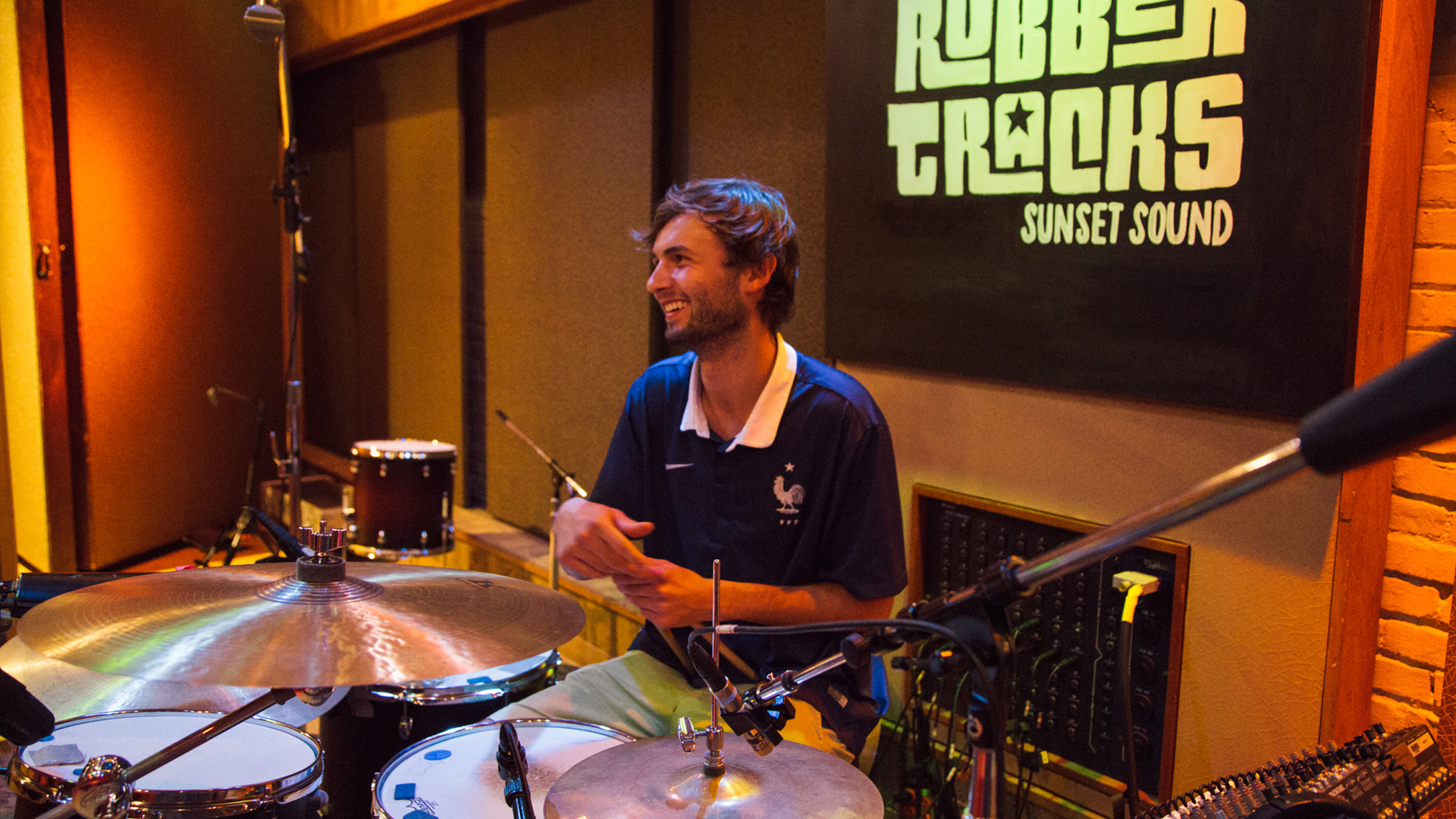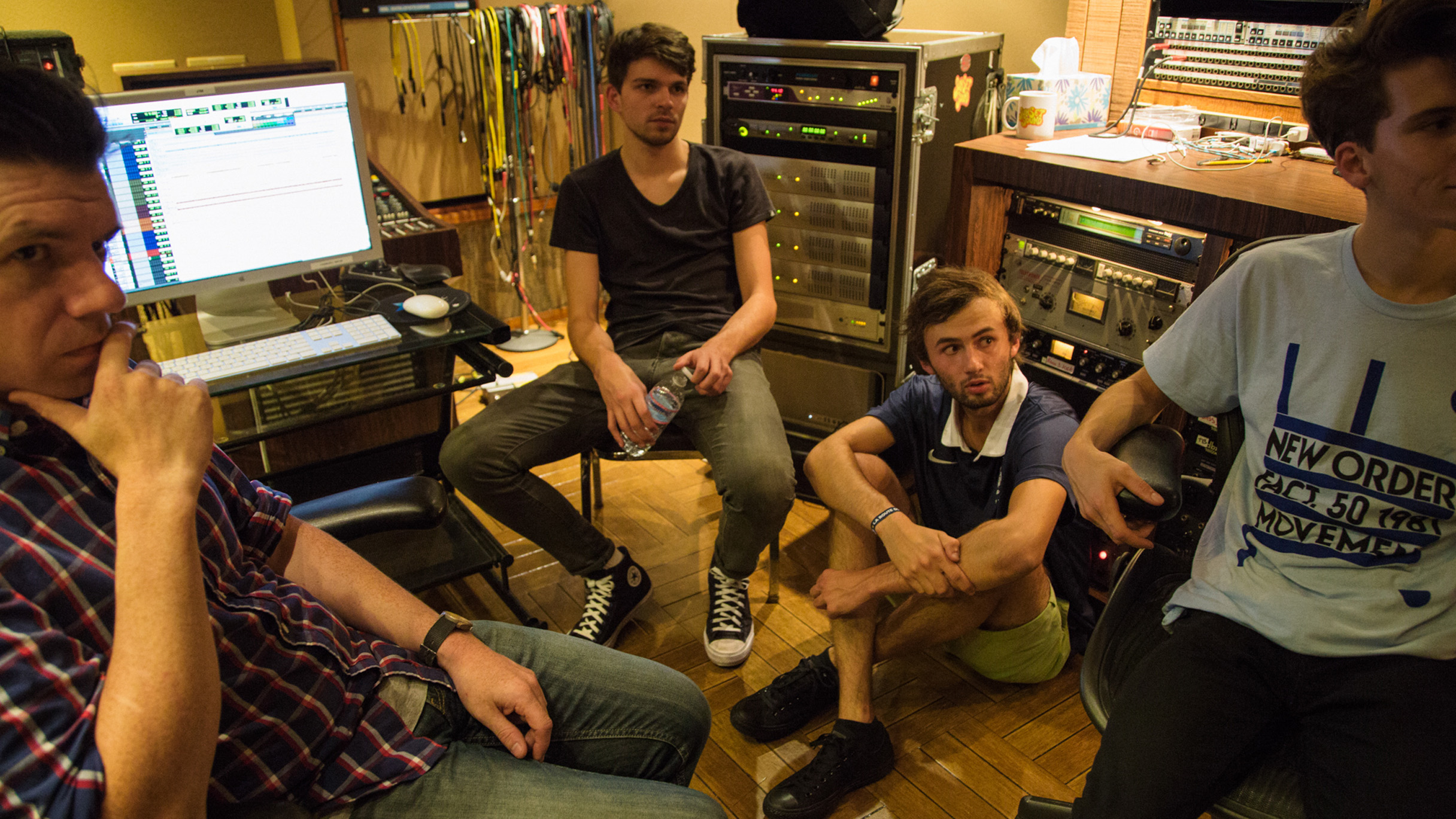Sitting right smack in the center of Hollywood, Sunset Sound is sacred. Exile on Main St., Pet Sounds, Led Zeppelin II, Strange Days, Purple Rain, Odelay. The list of projects that have been worked on within the studio walls is properly baffling. And yet, for many bands who applied for Converse Rubber Tracks’ most recent program—a worldwide two-week event offering free, guided time at some of the industry’s most revered recording studios—it wasn’t even their first choice.
That’s to be expected when studios like Abbey Road in London, Tuff Gong in Kingston, Jamaica, and Stankonia in Atlanta are possible destinations for hopeful artists, 9,000 of whom crossed their fingers and applied this year. Jed Lewis, Converse’s Global Music Marketing Director, has watched the initiative grow and grow since 2011 (there are now permanent Rubber Tracks studios in Brooklyn, Boston, and São Paulo), and credits the extent of its impact to bands’ evergreen interest in getting that illustrious studio sound.
“We saw that recording in a studio was a very expensive luxury that bands may not be able to afford,” says Lewis, surrounded by the gold records that line the walls of Sunset Sound. “You can record amazing music in home studios, basement studios, wherever. You don’t necessarily have to be in a professional recording studio, but the desire to do it was there… We saw it as an opportunity to really serve those emerging artists. To really be there—to be useful to artists in the arc of their career when they need us the most.”
Eighty-four such emerging artists representing twenty-eight different countries were ultimately selected for this leg of the program, including the band Beach Youth, who are an ’80s-inspired indie quartet out of Caen, France (although they may be losing the “indie” tag soon after major labels hear what these recordings sound like). Bravely accepting an interview outside of their native language, Simon Dumottier (vocals/guitar/synth), Gautier Caignaert (drums), and Etienne Froidure (vocals/guitar) let themselves be pulled away from the booth in Sunset Sound to talk about arriving in America, the studio experience, and how music is one thing that is never lost in translation.
Is this the first trip to America for you guys?
Simon Dumottier: Yes. When we had just arrived, we took a taxi, and he asked the same question, and I wanted to answer, “Us all”—“all of us”—and he thought I’d said “asshole,” and he turned back… [Laughs.] It was pretty funny, but after that I didn’t want to insult him.
It happens. I studied in Paris for a semester, and I’m sure I insulted so many people by accident… Have you wandered around Hollywood? Are you scarred for life?
Simon: [Laughs]. No, not at all. It’s pretty amazing. Everything is way bigger here. We’ve seen pictures of this place since we were children, so it’s pretty amazing to be here.
Glad you made it out alive. Correct me if I’m wrong, but I read that you guys were entered into the contest without your knowledge… Is that right?
“Sunset Sound was our first choice because our music is inspired by the sound [of Los Angeles] and palm trees. So for us, it’s the best place to record something.” — Gautier Caignaert
Simon: [Our manager entered us] the day before the submissions stopped. So we were very lucky.
How did you react when you found out you’d been accepted?
Simon: It seemed totally unreal because some of our favorite bands recorded here. The Beach Boys are a big influence.
You had a choice, though, right? It’s an obvious question, but with the other amazing options available to you, how did you settle on Sunset Sound and Los Angeles?
Gautier Caignaert: It was our first choice because our music is inspired by the sound [of Los Angeles] and palm trees. So for us, it’s the best place to record something.
Simon: It’s just like a normal day with more sun. [Editor’s note: Like the band’s cab driver from earlier, at this point I misheard Simon, and thought he said “Morrison” instead of “more sun.”]
Just a normal day. Although, that’s a fitting French connection of sorts: Jim Morrison, who ended up in France, and Beach Youth, who came to Sunset Sound, where The Doors started. Are there any other legends of Sunset Sound that stick in your head when you’re walking around here?
Simon: More recently, the Arctic Monkeys.
Gautier: Beatles.
Simon: Oh yeah, [we were told] that the last time The Beatles reunited was here. [Editor’s note: All four Beatles appeared on Ringo Starr’s 1973 album Ringo, with the Sunset Sound sessions bringing John, George, and Ringo all back into the same room; Paul’s parts were recorded at Abbey Road.]
How’s it been so far? Overwhelming? Incredible?
Simon: The songs never sounded this good. [Laughs.] I want to stay here.
Me too, actually. Compared to the recording of your earlier singles “Days” and “Waves,” does anything about this process particularly stand out as surprising?
Simon: It’s more elaborative.
Gautier: It’s different because when we recorded “Days” and “Waves,” we were in a garage—not a studio.
“When we first recorded these tracks it was, like, two-hundred years ago, and now, recording this is like nothing we’ve done before—[this is] the best studio in the world.” — Etienne Froidure
Simon: And we had no idea about what we wanted.
Gautier: It was at our beginning. We didn’t know what we wanted to do with them.
Etienne Froidure: When we first recorded these tracks it was, like, two-hundred years ago, and now, recording this is like nothing we’ve done before—[this is] the best studio in the world.
OK, I have a question here straight from my boss, who thinks this is of the utmost importance: He wants to know why you aren’t named Jeunesse de la Plage [“Beach Youth” in French]?
Simon: [Laughs.] It was quite hard to choose a name because all the names we wanted were already taken, so at last we just chose two words that we liked.
Etienne: It’s more like an image than anything.
So, last thing: are you guys going to be Converse wearers for life after this?
Simon: We already were before!
Good answer. I realize now that I came in here wearing Vans like an idiot. Don’t tell anyone. FL








